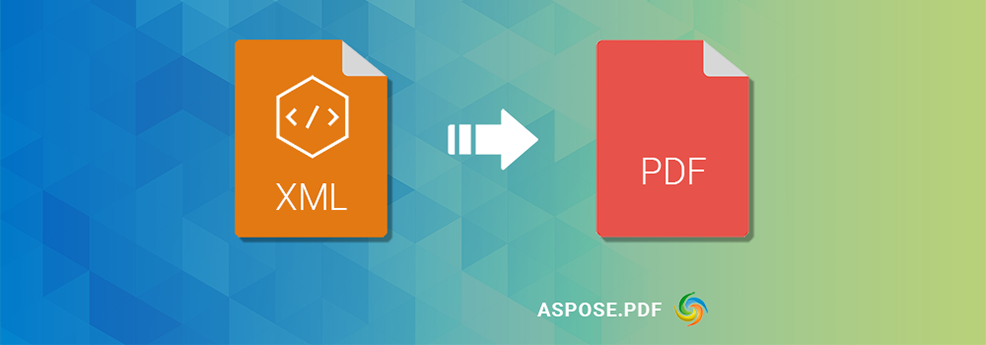How to Convert XML to PDF
Learn how easily convert XML to PDF with high quality using Java PDF library

How to Convert XML to PDF with Java
Support Schema for XML to PDF
With Aspose.PDF for Java, you have access to an XML schema specifically designed to define the structure of PDF documents. This allows for precise control and customization of the document’s layout and content. You can find this schema here.
Convert XML to PDF via Java
To generate PDF files from XML, Aspose.PDF for Java is the recommended solution. This powerful library is specifically designed to facilitate dynamic creation, processing, and conversion of PDF files within Java applications. It provides robust capabilities for transforming XML data into high-quality PDF documents.
By leveraging Aspose.PDF for Java, you can seamlessly integrate XML to PDF conversion into your Java applications and benefit from its comprehensive set of features and the flexibility to generate professional-looking PDF documents.

To obtain the Aspose.PDF library for Java, you have two options: downloading the JAR file directly or adding it to your Maven project using the following Maven configurations. This flexibility allows you to choose the installation method that best suits your needs and development environment.
The provided code demonstrates a process of converting XML data into a PDF document using Aspose.PDF for Java. It starts with defining the XML content, followed by an XSLT stylesheet that transforms the XML into HTML with specific styling instructions. The resulting HTML is then used to create a new PDF document using Aspose.PDF library.
To execute the conversion, a new instance of the PDF document is created. The XML data is bound to the document using the specified XML file and XSLT stylesheet. Finally, the generated PDF is saved to the specified output file.
It’s important to note that the code relies on the Aspose.PDF for Java library, and you would need to ensure that the library is properly installed and configured in your project for the code to execute successfully.
Try to convert XML to PDF online
With XML Converter, you have access to a convenient online service that allows you to convert files from one format to another effortlessly. Our platform supports numerous popular formats, including various image formats, multimedia file formats, and more. Converting XML files is a breeze: simply select the desired file type, specify the output format for your document, upload the file, and click ‘Upload’ to initiate the conversion process.
Get a Free License
A temporary license is available for acquiring unrestricted access to the API without any evaluation limitations. This allows you to fully utilize the API’s features and functionalities during the specified duration of the temporary license.
Documentation Aspose.PDF for Java Library
See other features of Aspose.PDF for Python library on Documentation pages
Conclusion
In this article, you have been introduced to the process of converting XML to PDF using Java. By integrating this functionality into your Java applications, you can seamlessly generate PDF files from XML data, enhancing your document generation capabilities. If you want more details about Aspose.PDF libraries - visit our landings pages